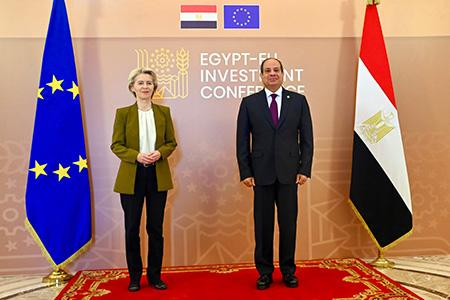
Scalability for Europe’s innovators requires private capital, climate change and digitalisation demand that capital quickly. Europe needs more and better investment in key sectors to drive Europe’s place in the world, says Invest Europe.
Invest Europe’s call to action echoes Italian Prime Minister Enrico Letta in his landmark report for the European Commission on the Future of the Single Market. He, too, is keen to drive innovation and unlock more private capital for a more competitive EU.
But as he told Euractiv, there are systemic challenges. “In general, in the financial business system in Europe, I think it is necessary to limit the risk aversion that is today one of the characteristics of our system. Today we live in a system in which risk aversion is one of the behaviours of Europeans and our business and financial policies.”
Letta added: “So, maybe I can just say that my report is trying to clearly state that this risk aversion can be the coffin of European competitiveness. To be competitive, we need to take some risks. And this is exactly what I would like to do,” he said.
“In my journey around Europe, I have seen so many examples of young startups from Malaga to Tallinn, from Nancy to Eindhoven, and their only dream is to leave Europe to go to the US. Why? Because they find money, they find a way to be financed!” Letta explained.
Unlocking private capital
Invest Europe represents Europe’s private equity, venture capital and infrastructure sectors, and agrees that driving innovation and unlocking more private capital is the only way to a more competitive EU.
According to the association, the European private capital industry has grown significantly over the last five years, now accounting for €1 trillion of capital under management, including €348 billion of dry powder available for investment at the end of 2022.
However, in the face of complex challenges stemming from climate change and digitalisation, the EU needs to do more, faster to avoid stagnation.
Investment empowers innovation, tackles climate change, and strengthens European infrastructure, thereby creating a prosperous, sustainable and world-leading Europe, according to Invest Europe’s manifesto.
Avoiding market fragmentation
Letta took a broader and deeper view: “I don’t want the European Union changing its own values. I think the European Union has to continue to be herself. But at the same time, the European Union has to change on some aspects that are not working, like fragmentation.”
“This is one of the big frames for me,” he said, adding: “The other very important frame is that today, for Europe, inertia means decline. We need to act! Inertia means decline. If we stay as we are, we will decline!”
With the outcome of the European Elections unfolding in the coming weeks, newly elected policymakers will have to take appropriate steps at the speed and scale necessary to make the EU a global powerhouse during the 2024-29 EU political mandate.
Invest Europe has set out 12 actions for long-term private capital investment. Firstly, it says, Europe must unlock the capital needed to fund the so-called “twin transitions,” including by removal of barriers to pension fund and insurer investment in the digital and climate transitions.
Bridging savings, financing transition
Letta explained his thinking on this proposal in his report: “It is one of the proposals to create this bridge between savings of European people and financing of the transition for a very simple reason. What we miss in Europe, is the presence of institutional investors, we miss the presence of the pension funds.”
Letta said his proposal is to launch and to relaunch the role of pension funds, to create the tools to develop pension funds able to act as institutional investors and to create this bridge between savings and the transition costs.
On the question of the completion of the Capital Markets Union, Letta and Invest Europe are on the same page.
Invest Europe acknowledges that a common objective has emerged across European industry – finding more funding for European companies.
Private equity, venture capital and infrastructure fund investment are an essential part of the solution, helping feed the innovation that is the cornerstone of meeting digital and sustainability objectives. However, boosting innovators and creating an environment for them to thrive is also essential.
Technological innovation
Eric de Montgolfier, CEO of Invest Europe, said: “Europe’s future influence and success will depend on the performance and scalability of its innovative companies. Private capital has a clear track record of success in fostering innovation and building better businesses, which can propel companies and the continent to the next level.”
Letta remarked: “This is why [I propose] the deep tech stock exchange, and this is why the proposal of integrating the financial markets to have the possibility to scale and to create more dimensions and a bigger dimension to help the investments.”
Invest Europe data shows that private equity and venture capital funds invested €557 billion into European companies in the five years between 2019 and 2023.
That capital benefits the economy and society, with 7.2% more jobs created by private equity and venture capital-backed businesses in 2022.
At the same time, buyout funds delivered 10-year returns of 16.43% to long-term investors such as pension funds, while VC funds returned 23.07% over the same period, helping fund better retirements for European citizens.
“The new EU political mandate presents a compelling opportunity for the EU to elevate its ambition. Strategic actions that consider the entire investment ecosystem, starting with institutional investors, can mobilise more private capital and enable the industry to maximise its contribution to enhancing Europe’s competitive edge,” said de Montgolfier.
[By Jennifer Baker I Edited by Brian Maguire | Euractiv’s Advocacy Lab ]







